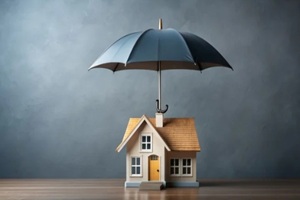
Every homeowner must maintain sufficient home insurance coverage to protect their dwelling from damage, theft, fire, and more. However, homeowner’s insurance can protect more than the primary structure. With the right policy, homeowners can extend their protection to include their belongings, other structures, liabilities, additional expenses, and more.
Below, we break down key protections beyond primary dwelling coverage that homeowners should know about. When working with your home insurance agent, ask about these additional coverages to learn how your home insurance policy can cover other structures and assets.
Personal Belongings Coverage
Coverage for personal belongings varies in basic home insurance policies, but it usually falls between 50-70% of the coverage amount on the home. By conducting a home inventory (on your own or with the aid of an insurance firm), you can assess whether the value of your belongings warrants additional coverage.
Even items stored outside the home or property can be covered by personal belongings coverage, though typically to a lesser amount. Additionally, high-value items are covered, including art collections, jewelry, electronics, silverware, antiques, and more. However, most insurers set value limits on their personal belongings coverage.
Homeowners with belongings worth more than these limits should consider an additional personal property endorsement following a documented appraisal of their items. The liability limit on high-value belongings differs between insurance providers, which is why homeowners with high-value items should get official appraisals to determine how much extra coverage they need.
Other Structures Coverage
Homeowners insurance can cover structures other than the home, including sheds, pools, decks, fences, garages, and more. Other structures are susceptible to many of the same threats as the main home, including weather damage, fire, and vandalism. However, liability limits work differently on other structures, and not all structures qualify for protection without additional endorsements.
For example, most policies cover unattached structures for up to 10% of the value of the dwelling coverage. Before adding another structure to the property, you should consider how the coverage limit on your main dwelling will impact the protection available for these additions.

Additionally, different policies may have different definitions of “other structures.” For example, some may cover in-ground pools but not above-ground pools. Others may require a covering or deck to include a structure in the primary or additional coverage limit.
Speak with your policy provider about other structures coverage to protect your property beyond the main home and buy additional riders for any coverage gaps.
Liability Coverage
Homeowners insurance policies often include protections against liabilities for damage and injuries sustained on the property. For example, liability insurance may cover the costs if a guest on your property falls, is injured, and attempts to sue for medical expenses.
Liability coverage also protects homeowners from the damage they cause to another person’s property. For example, if your dog damages a neighbor’s fence, liability coverage may pay for it. Significantly, damage done to your own fence would be covered by your dwelling insurance rather than liability coverage.
With liability coverage, homeowners are protected from responsibility for medical bills or legal expenses in numerous situations involving liability claims. Speak with your provider about the limits on liability insurance in your situation. Depending on the layout of your property, you may want to increase your coverage.
Additional Living Expenses Coverage
When your home is damaged, you may need to live somewhere else while repairs are completed. This results in additional costs, including hotel stays, meals, travel costs, and other living expenses. If you rent out your home, this damage may also result in lost income.
Your homeowners insurance may cover these costs under additional living expenses coverage (ALE). ALE may include a coverage limit and a timeframe requirement. However, for policies that offer it, ALE provides homeowners with additional protections beyond their dwelling coverage for these emergencies.
Even if the coverage for additional expenses runs out, the policy will still pay for the cost of the repairs. If you rent your property, ask your insurance provider about adding or increasing ALE coverage.
Contact Pro Insurance Group to Learn More About Additional Protections

Unforeseen events can cause costly damage to your home, belongings, and other structures. Guests who injure themselves on your property may file a lawsuit to recoup their medical expenses. A disaster may prevent you from living in your home (or renting it out) for an extended period.
In these and other scenarios, many homeowners are surprised to learn that their homeowners insurance policy offers protection, including coverage for legal expenses, medical bills, and additional living expenses. Individual liability limits will differ depending on your dwelling coverage limits and your insurer’s terms. However, most policies offer some degree of additional protection.
Contact our experienced team at Pro Insurance Group to learn how our agents can safeguard your home while providing these additional protections and more. Request a consultation to schedule a property valuation and get a quote for the primary and additional coverage that makes sense for your situation.
